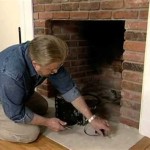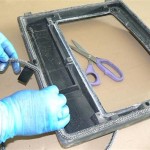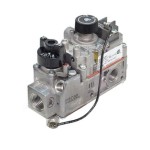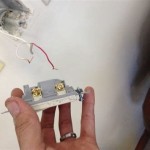Built-In Entertainment Center With Fireplace Designs: A Comprehensive Guide
The integration of a built-in entertainment center with a fireplace represents a significant design trend in modern homes. This combination not only serves functional purposes, providing storage and a focal point, but also enhances the aesthetic appeal and overall ambiance of a living space. Deliberate planning and execution are crucial to ensure the design aligns with the homeowner's needs, architectural style, and budget.
This article will explore various aspects of built-in entertainment centers with fireplace designs, encompassing design considerations, material selection, installation processes, and safety guidelines. It aims to offer a comprehensive understanding of the subject, enabling homeowners and design professionals to make informed decisions.
Key Design Considerations for an Integrated Entertainment Center and Fireplace
Before embarking on the construction of a built-in entertainment center and fireplace, several key design considerations must be addressed. These considerations form the foundation of the project and influence all subsequent decisions.
Space Assessment and Dimensions: The initial step involves a thorough assessment of the available space. Accurate measurements of the wall where the structure will be built are paramount. Consideration must be given to the room's overall dimensions, including ceiling height and depth. The scale of the entertainment center should be proportional to the room size. An oversized unit in a small room can overwhelm the space, while an undersized unit in a large room may appear insignificant. The placement of existing architectural features, such as windows, doors, and electrical outlets, must also be considered to avoid obstructions or conflicts.
Architectural Style and Aesthetics: The design of the built-in unit should complement the existing architectural style of the home. Whether the home embraces a modern, traditional, rustic, or contemporary aesthetic, the entertainment center should seamlessly integrate with the overall design scheme. This includes selecting materials, colors, and finishes that align with the existing décor. For instance, a modern home might benefit from clean lines, minimalist design, and neutral colors, while a traditional home could incorporate ornate details, rich wood tones, and classic moldings.
Functionality and Storage Needs: The primary function of an entertainment center is to provide storage and display space for electronic equipment, media, and other belongings. Therefore, a clear understanding of the homeowner's storage needs is vital. This includes determining the number of shelves, cabinets, and drawers required to accommodate items such as televisions, speakers, gaming consoles, DVDs, books, and decorative objects. The design should also consider cable management solutions to conceal wires and maintain a clean, organized appearance. The accessibility of storage areas is another important factor. Frequently used items should be easily accessible, while less frequently used items can be stored in more concealed or less accessible areas.
Fireplace Type and Integration: The type of fireplace to be integrated into the entertainment center significantly impacts the design. Options include traditional wood-burning fireplaces, gas fireplaces, and electric fireplaces. Each type has its own requirements regarding venting, clearances, and safety regulations. Wood-burning fireplaces require chimneys and proper ventilation to ensure safe operation. Gas fireplaces need gas lines and may require professional installation. Electric fireplaces are the simplest to install, as they only require a standard electrical outlet. The chosen fireplace type must be seamlessly integrated into the overall design of the entertainment center, both aesthetically and functionally. The mantel, surround, and facing materials should complement the fireplace and the rest of the unit.
Budget Considerations: Establishing a realistic budget is essential before beginning the design process. The cost of a built-in entertainment center with a fireplace can vary significantly depending on the size, materials, complexity of the design, and labor costs. It is advisable to obtain quotes from multiple contractors and suppliers to compare prices and ensure that the project stays within budget. Prioritizing essential features and making strategic choices regarding materials and finishes can help to control costs without compromising the overall design aesthetic.
Material Selection and Construction Techniques
The choice of materials and construction techniques plays a crucial role in the durability, appearance, and overall cost of the built-in entertainment center and fireplace surround. Selecting appropriate materials requires careful consideration of factors such as aesthetics, durability, fire resistance, and budget.
Wood Options: Wood is a popular material for building entertainment centers due to its versatility, warmth, and aesthetic appeal. Various wood species are available, each with its own unique characteristics and price point. Hardwoods like oak, maple, and cherry are durable and offer a rich, elegant appearance. Softwoods like pine and fir are more affordable but may require more frequent maintenance. Plywood and MDF (Medium-Density Fiberboard) are commonly used for the internal structure of the entertainment center due to their stability and cost-effectiveness.
Fireplace Surround Materials: The fireplace surround requires materials that are both aesthetically pleasing and fire-resistant. Common options include brick, stone, tile, and metal. Brick and stone offer a classic, timeless look and are highly durable and fire-resistant. Tile is available in a wide range of colors, patterns, and textures, providing flexibility in design. Metal, such as steel or copper, can add a modern, industrial touch. When selecting materials for the fireplace surround, it is crucial to ensure that they comply with local building codes and safety regulations.
Mantel Options: The mantel serves as a decorative shelf above the fireplace and can be made from various materials, including wood, stone, and concrete. A wooden mantel can add warmth and character to the space, while a stone mantel can create a more formal and elegant look. A concrete mantel can provide a sleek, modern aesthetic. The size and style of the mantel should be proportional to the fireplace and the overall design of the entertainment center.
Construction Techniques: The construction of a built-in entertainment center requires skilled craftsmanship and attention to detail. Traditional woodworking techniques, such as joinery and cabinetmaking, are often employed to create a durable and aesthetically pleasing structure. Modern construction techniques, such as using power tools and pre-fabricated components, can help to speed up the construction process and reduce labor costs. Whether traditional or modern techniques are used, it is essential to ensure that the construction is structurally sound and meets all building codes and safety regulations.
Finishing and Detailing: The finishing touches and detailing can significantly enhance the overall appearance of the entertainment center. Options include painting, staining, varnishing, and applying decorative moldings. The choice of finish should complement the materials used and the overall design aesthetic. Decorative moldings can add visual interest and create a more refined and sophisticated look. Careful attention to detail, such as smooth sanding, precise cuts, and seamless joints, is crucial for achieving a high-quality, professional finish.
Safety and Installation Guidelines
Safety is paramount when installing a built-in entertainment center with a fireplace. Proper installation and adherence to safety guidelines are crucial to prevent fire hazards, ensure structural integrity, and protect the well-being of the occupants.
Clearance Requirements: Fireplaces generate heat, and it is essential to maintain adequate clearances between the fireplace and combustible materials, such as wood, drywall, and fabrics. Building codes specify minimum clearance requirements for different types of fireplaces. These requirements must be strictly adhered to during installation to prevent the risk of fire. Consulting with a qualified building inspector or fire safety professional is advisable to ensure compliance with all applicable regulations.
Venting and Ventilation: Wood-burning and gas fireplaces require proper venting to exhaust combustion gases safely. Wood-burning fireplaces typically require a chimney, while gas fireplaces may require a vent pipe. The venting system must be properly installed and maintained to prevent carbon monoxide poisoning. Electric fireplaces do not require venting, as they do not produce combustion gases. Proper ventilation around the fireplace is also important to prevent overheating and ensure efficient operation.
Electrical Considerations: Electric fireplaces and electronic equipment require electrical power. Proper electrical wiring and grounding are essential to prevent electrical shocks and fire hazards. All electrical work should be performed by a qualified electrician in accordance with local electrical codes. Surge protectors should be used to protect electronic equipment from power surges. The electrical outlets should be conveniently located and easily accessible for maintenance and repairs.
Structural Support: The built-in entertainment center must be structurally sound and capable of supporting the weight of the fireplace, electronic equipment, and other belongings. Proper framing and anchoring are essential to prevent the unit from collapsing or shifting over time. The walls and floors must be able to bear the weight of the unit without excessive deflection or settling. Consulting with a structural engineer is advisable if there are any concerns about the structural integrity of the building.
Professional Installation: While some homeowners may be tempted to install a built-in entertainment center with a fireplace themselves, professional installation is highly recommended. Experienced contractors have the knowledge, skills, and tools necessary to ensure that the installation is done correctly and safely. Professional installation can also help to avoid costly mistakes and ensure that the project complies with all applicable building codes and safety regulations.

Custom Built In Entertainment Furniture And Cabinets With Electric Fireplaces

Custom Built In Entertainment Furniture And Cabinets With Electric Fireplaces

50 Inspiring Entertainment Center Ideas For Your Home In 2024 Living Room Decor Fireplace

Built In Wall Drywall Entertainment Centers En Fireplace Center Contemporary

Custom Built White Wall Unit With Dimplex Electric Fireplace Furniture Design Gallery

Custom Entertainment Center Cabinets And Built In Wall Units Fireplace Unit

Modern Tv Wall With Fireplace Iv Yo Carpentry

Wall Unit With Stone And Fireplace Furniture Design Gallery

Faux Stone Fireplace Entertainment Center Genstone

ᑕ❶ᑐ Entertainment Center With Fireplace Discover Your Best Life
Related Posts








